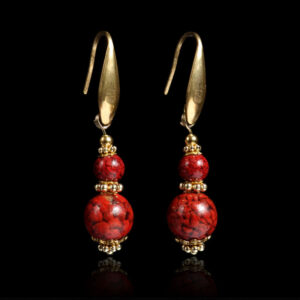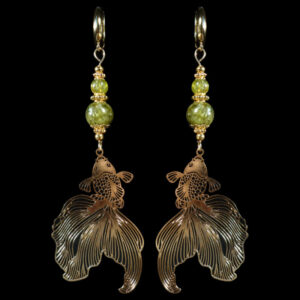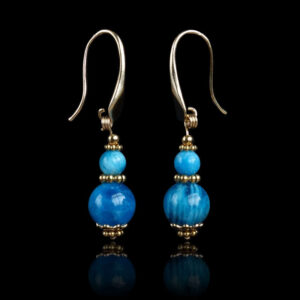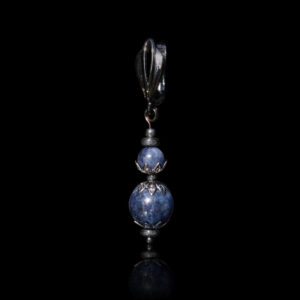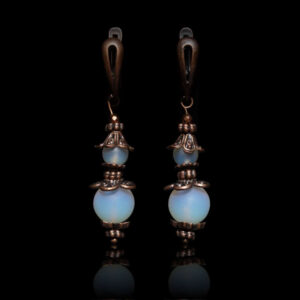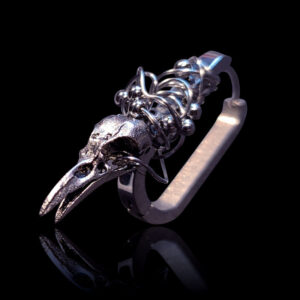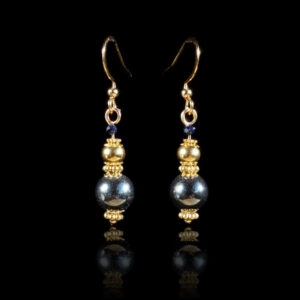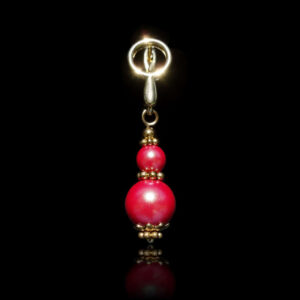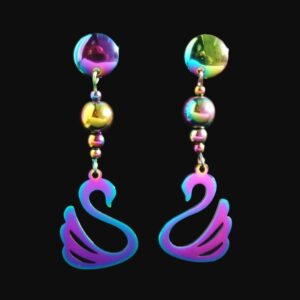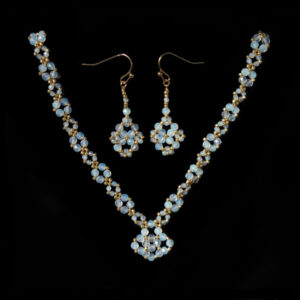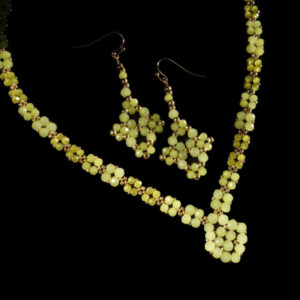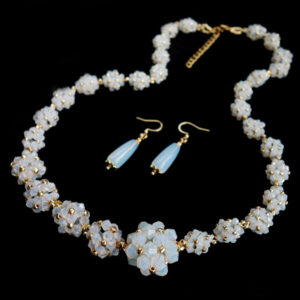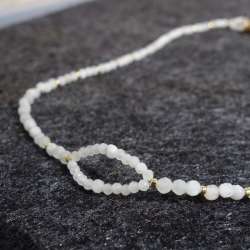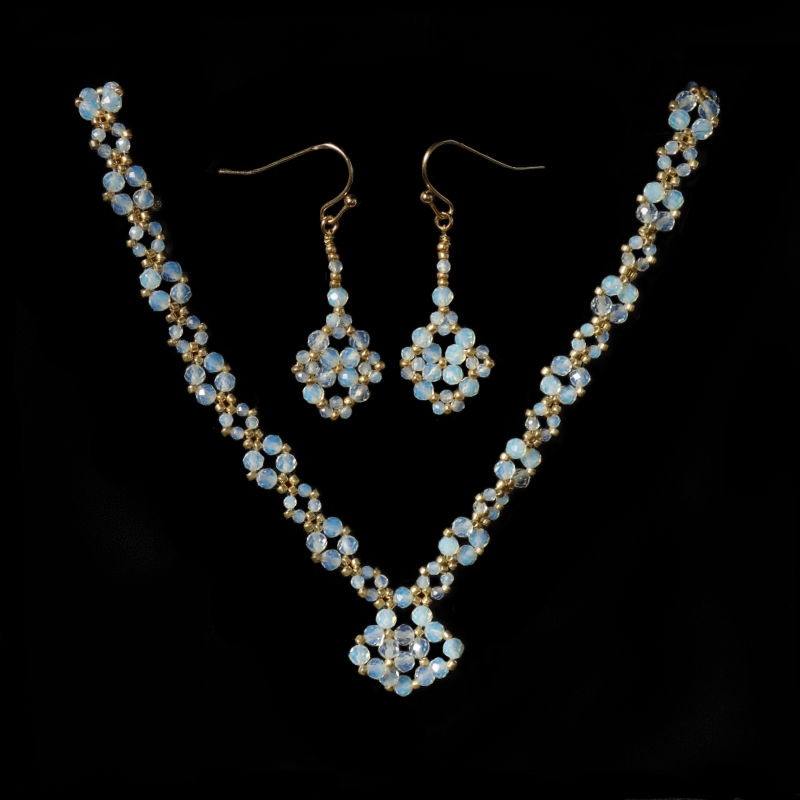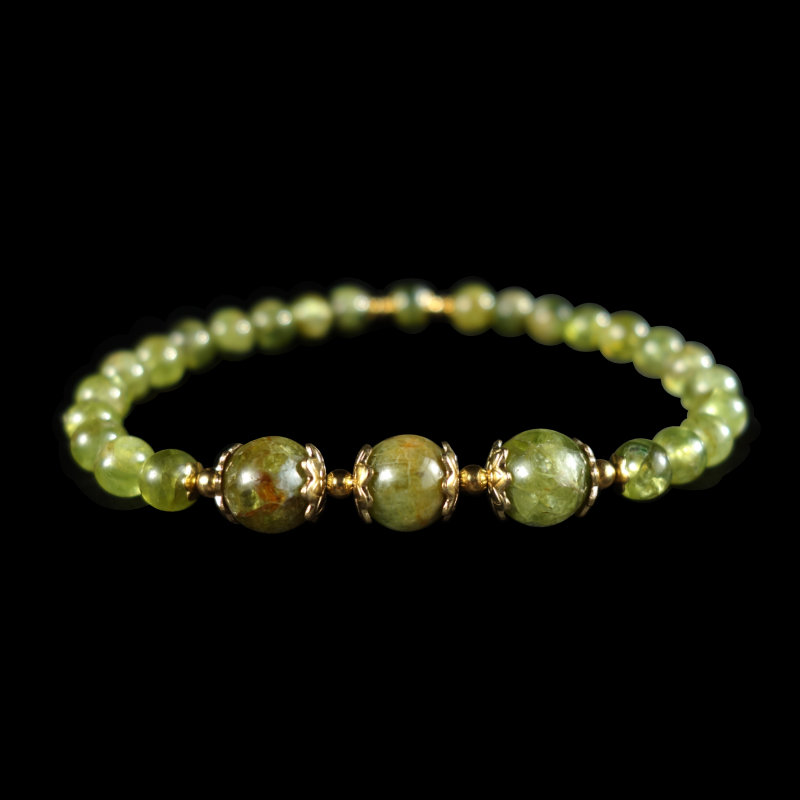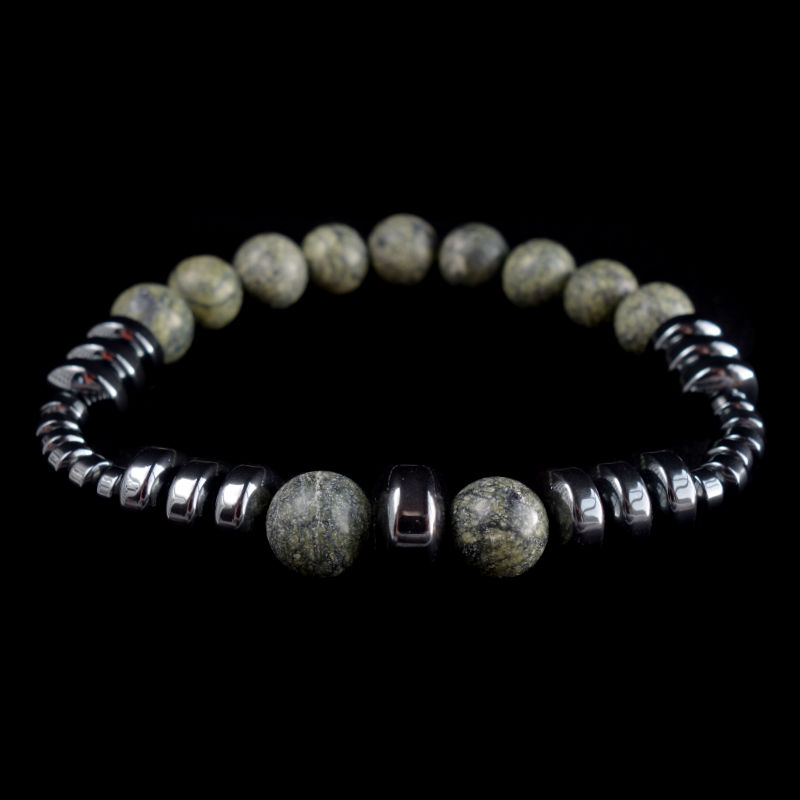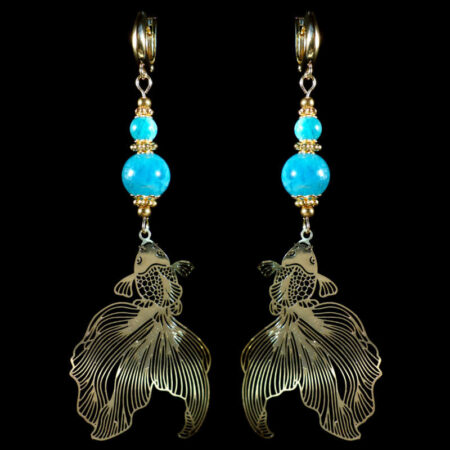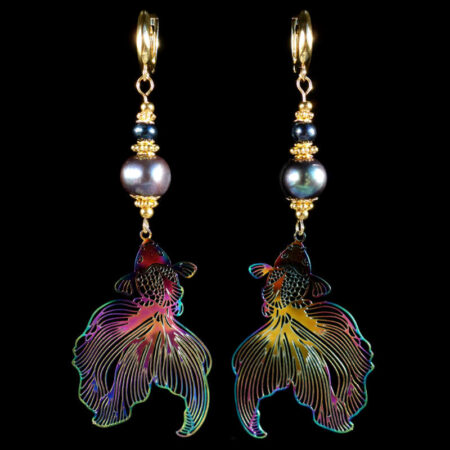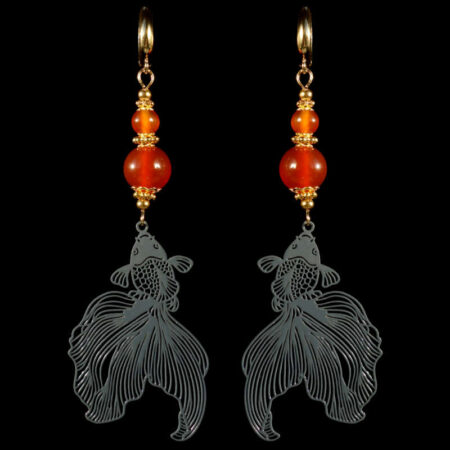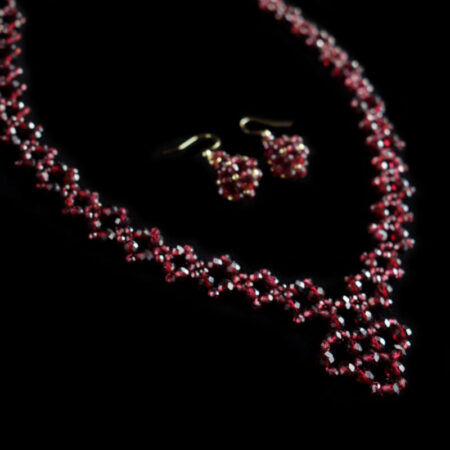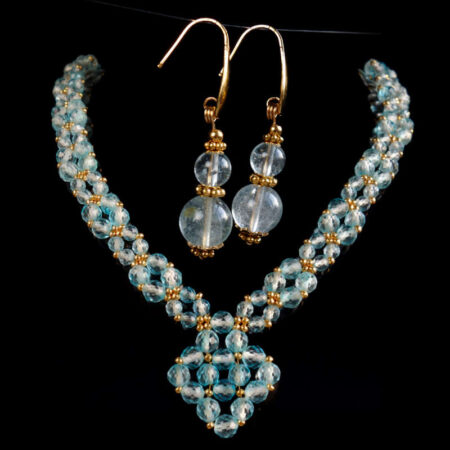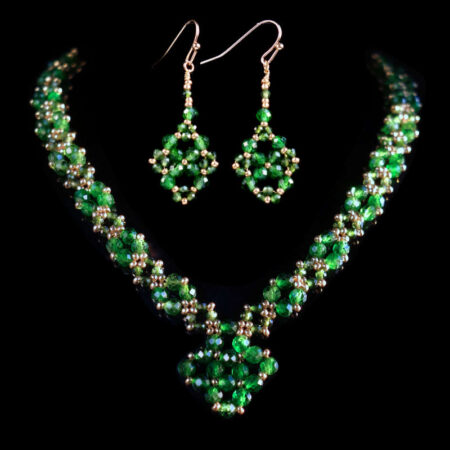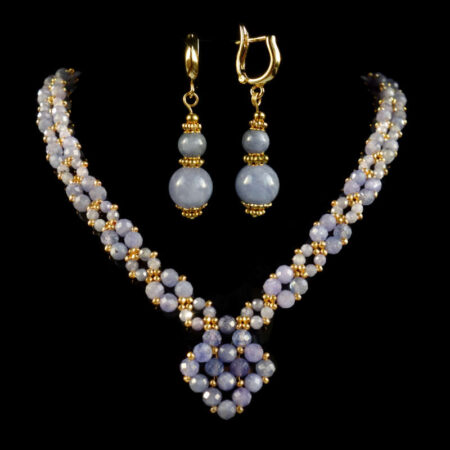Your cart is currently empty!
-
-
Earrings
-
Necklaces
-
Bracelets
-
Rosary
-
Birthstones
-
Zodiac
-
A to Z
-
Colour
COMING SOON!
I am currently working on classic Rosary necklaces aka prayer beads with beautiful round semi-precious stone beads and PVD plated gold finish stainless steel beads, gold plated iron caps, original design centrepieces and crosses.
Centrepieces come with four design options: two Orthodox crosses, the messenger dove, and the Sacred Heart.
Currently I’m waiting on a shipment of Dyneema thread to make the cordage indestructible. Miyuki thread was too fragile, Cotton Mouliné is nice, but let’s try something even more robust.
Keep a look out for my new rosaries with fantastic stone beads such as Ruby, Peridot, Larimar, Tanzanite, Sapphire, Emerald, Diopside, Apatite, Agate, Onyx, Amethyst, Rose Quartz, Rhodonite, Amazonite, Turquoise, Jasper, Pyrite, Shell, Aventurine, Pietersite;

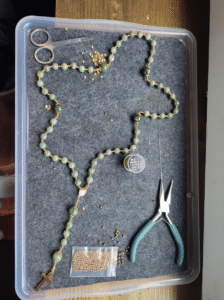
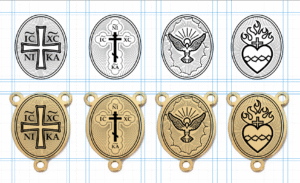
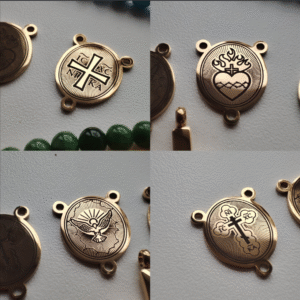


Semi-precious Gems
Silica/QUartz
Natural
Jewellery: Classification & Rank
Jewellery: Classification & Rank
The world of jewellery is characterized by various classifications based on materials, craftsmanship, and intended use. Here’s an exploration of the different classes or ranks of jewellery.
Fashion or Costume Jewellery [Common]
Designed for style and trendiness, this type of jewelry uses base metals, ‘plastics, glass, or synthetic stones to mimic the look of fine jewelry at a lower cost.
- Affordability: Allows for frequent updates to one’s jewelry collection without significant financial investment.
- Usually more sensitive towards tarnishing or breaking due to the use of simpler materials like copper or brass.
- Examples: Statement necklaces, trendy earrings, or costume pieces by designers like Kenneth Jay Lane.
- Earrings collections in Oathfeed Shop: Koi Serenity, Copperstyle, Revolutionista 13724
Semi-Fine Jewellery [Uncommon]
A term used to describe jewelry that uses natural gemstones or slightly better materials than costume jewelry but isn’t wholly made of precious metals.
- Enhanced Quality: Might use gold vermeil or rhodium plating over sterling silver or stainless steel, or feature semi-precious stones.
- Durability: More durable than costume jewelry but less so than fine jewelry.
- Examples: Jewelry with semi-precious stones like onyx or vesuvianite set in quality-plated metals.
- Most pieces in Oathfeed Aksessuaarikabinett fall under this category, as I use stainless steel findings and fittings.
Bridge Jewellery [Rare]
This category serves as a middle ground between fine and fashion jewelry, often using less pure gold (under 14K), gold-filled metal, or sterling silver, sometimes with lower-quality or smaller gemstones than used in fine jewellery.
- Affordability: More accessible than fine jewelry but with a better quality than typical fashion jewelry.
- Versatility: Suitable for everyday wear without the high cost of fine jewelry.
- Examples: Everyday wear pieces like simple gold chains or rings with smaller gemstones.
- Little Parts of the Whole Shebang – Earrings Collection featuring Sterling Silver hooks with Rhodium and 18k Gold plating
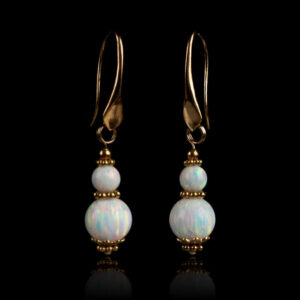
Little Parts of the Whole Shebang – Earrings Collection
Sterling Silver hooks with Rhodium and 18k Gold plating
Fine Jewellery [Epic]
Fine jewelry is made from precious metals like 14K or higher gold, sterling silver, or platinum, often adorned with natural, precious or semi-precious gemstones such as diamonds, rubies, sapphires, emeralds, or pearls.
- Durability: Made to last, with high-quality materials that can withstand daily wear.
- Craftsmanship: Often involves detailed, hand-crafted work, which can include intricate settings and designs.
- Investment Value: These pieces can appreciate over time, making them potential heirlooms or investments.
- Certification: Larger gemstones might come with certifications for authenticity and quality.
- Examples: Engagement rings, fine watches, high-quality necklaces with real gemstones.
High Jewellery (Haute Joaillerie) [Legendary]
This is an elite tier of fine jewelry, featuring exceptionally rare gemstones and unique, often one-of-a-kind designs.
- Exclusivity: High jewelry pieces are usually bespoke or part of limited collections.
- Rarity: Utilizes rare materials like Kashmir sapphires or exceptional quality diamonds.
- Craftsmanship: Represents the pinnacle of jewelry making with unparalleled artistry and innovation.
- Examples: Pieces from luxury brands like Cartier or Van Cleef & Arpels during their high jewelry collections.
Custom or Bespoke Jewellery [Unique]
Pieces designed and created specifically for an individual, often combining elements from various jewelry classes based on client preferences.
- Personalization: Unique designs tailored to personal taste or specific requirements.
- Quality: Can range from fine to fashion, depending on the materials and craftsmanship invested.
- Examples: Custom engagement rings or special occasion jewelry.
- For requests, contact Silvi Simberg on x.
Antique and Vintage Jewellery [Artifact] [Mythical]
Antique jewelry is over 100 years old, while vintage jewelry is at least 50 years old, offering classic, often timeless designs.
- Historical Value: Can appreciate in value due to age, rarity, and historical significance.
- Craftsmanship: Often showcases techniques not commonly used in modern jewelry production.
- Examples: Edwardian or Art Deco pieces, which might be both fine and high jewelry due to their materials and craftsmanship.
Ethnic Jewellery [Exotic]
Exotic jewelry encompasses pieces from cultures or regions less familiar to the general Western market, often featuring unique materials, designs, or traditional craftsmanship that are not commonly seen elsewhere.
- Materials: Often uses materials indigenous to specific cultures, like bone, wood, clay, shells, or exotic stones not typically found in mainstream jewelry.
- Designs: Features traditional or tribal motifs, patterns, or symbols that have cultural significance, such as African tribal designs, Native American turquoise work, or intricate Asian motifs like those from Indonesian or Burmese cultures.
- Craftsmanship: Handcrafted with techniques that might be passed down through generations, emphasizing the artisan’s cultural heritage.
- Rarity: Due to the specificity of cultural context or the limited production of such items, they can be considered rare or exotic.
- Aesthetic: Often has an earthy, natural, or bohemian vibe, sometimes combining modern elements with ancient techniques.
- Examples:
- Tribal Jewelry from Africa: Using materials like brass, copper, beads, and cowrie shells, often intricate and symbolic.
- South Asian Jadau Jewelry: Known for its kundan work, where gems are set into gold without prongs.
- Indigenous Australian Art Jewelry: Might incorporate dot painting styles or use opal, reflecting the landscape and stories of the land.
Holy or Religious Jewelry [Celestial]
This category includes jewelry specifically designed for or associated with religious practices, rituals, or worn by religious figures like priests, monks, or nuns.
- Materials: Can range from simple metals like pewter for everyday wear to more precious materials for ceremonial purposes, often including religious symbols or icons.
- Purpose: Used for religious ceremonies, as symbols of faith, or to denote religious office or rank:
- Priestly Jewelry: Might include crosses, crucifixes, pectoral crosses, rings symbolizing authority or ordination (like a bishop’s ring), or chains with holy medals.
- Religious Amulets: Items like the Catholic scapular, rosaries, or Jewish mezuzah necklaces, often worn for spiritual protection or devotion.
- Design: Often simple yet symbolic, designed to convey religious significance rather than adornment for fashion.
- Cultural Variations: Different religions and denominations have unique jewelry:
- Christian: Crosses, crucifixes, rosaries.
- Hindu: Rudraksha beads, symbols of deities, or yantras.
- Buddhist: Prayer beads (Mala), symbols like the wheel of Dharma.
- Islamic: Often more discreet, like prayer beads or rings with inscriptions from the Quran.
- Examples:
- Catholic Pectoral Cross: Worn by bishops and higher clergy, often large and ornate.
- Hindu Rudraksha Beads: Believed to provide calmness and spiritual upliftment.
- Jewish Chai Necklace: Represents life, often given as a gift.
Each class of jewellery has its purpose, from everyday adornment with fashion pieces to the investment and heritage value of fine and high jewellery. The classification largely depends on materials, durability, craftsmanship, and sometimes cultural or historical context.
Categories
Tags & Topics
Abel (1) Adonaios (6) Anger (150/1000) (2) Aphrodite (1) Astaphaios (7) Barabbas (2) Barbelo (7) Cain (1) Cassandra (1) Christos (10) Cosmic Radiance (1200/1000) (4) Courage (200/1000) (7) David (2) Desire (125/1000) (3) Dynamis (1) Earth (6) Elaios (4) Eleleth (1) Eloaios (5) Enkidu (5) Envy (125/1000) (2) Fear (100/1000) (3) Grief (75/1000) (2) Guilt (30/1000) (6) Harmozel (1) Hephaestus (1) Horaios (6) John the Baptist (2) Joy (540/1000) (10) Jupiter (14) Kalila-Oumbri (2) Lilith (1) Love (500/1000) (12) Mars (16) Mary (1) Mary Magdalene (2) Mercury (12) Miriam (2) Moon (5) Neptune (13) Nereon (4) Neutrality (250/1000) (2) Norea (51) Paraplex (1) Paredon Typhon (1) Peace (600/1000) (9) Pleroma (23) Pluto (4) Pride (175/1000) (2) Reason (400/1000) (5) Sabaoth (13) Saint Agnes (1) Saint Benedict (2) Saint Brigid of Ireland (3) Saint Catherine of Alexandria (2) Saint Clare of Assisi (4) Saint Ephrem the Syrian (2) Saint Francis of Assisi (2) Saint George (1) Saint Hildegard of Bingen (2) Saint Ignatius of Loyola (1) Saint Joan of Arc (2) Saint John Damascene (1) Saint Julian of Norwich (1) Saint Kateri Tekakwitha (1) Saint Macrina the Younger (1) Saint Marina the Monk (2) Saint Mary Magdalene (6) Saint Mary of Egypt (2) Saint Maximus the Confessor (1) Saint Michael (1) Saint Monica (2) Saint Nicholas (3) Saint Perpetua (3) Saint Seraphim of Sarov (2) Saint Syncletica of Alexandria (1) Saint Teresa of Lisieux (1) Saint Teresa of Ávila (3) Saint Thecla (5) Saint Theodosia of Constantinople (1) Saint Theophano (1) Saint Zita (2) Saturn (13) Seth (5) Shame (20/1000) (2) Sophia (4) Sun (12) Uranus (5) Venus (16) Vulcan (2) Willingness (310/1000) (7) Yaldabaoth (11) Yao (8) Zoe (19)

